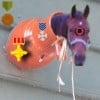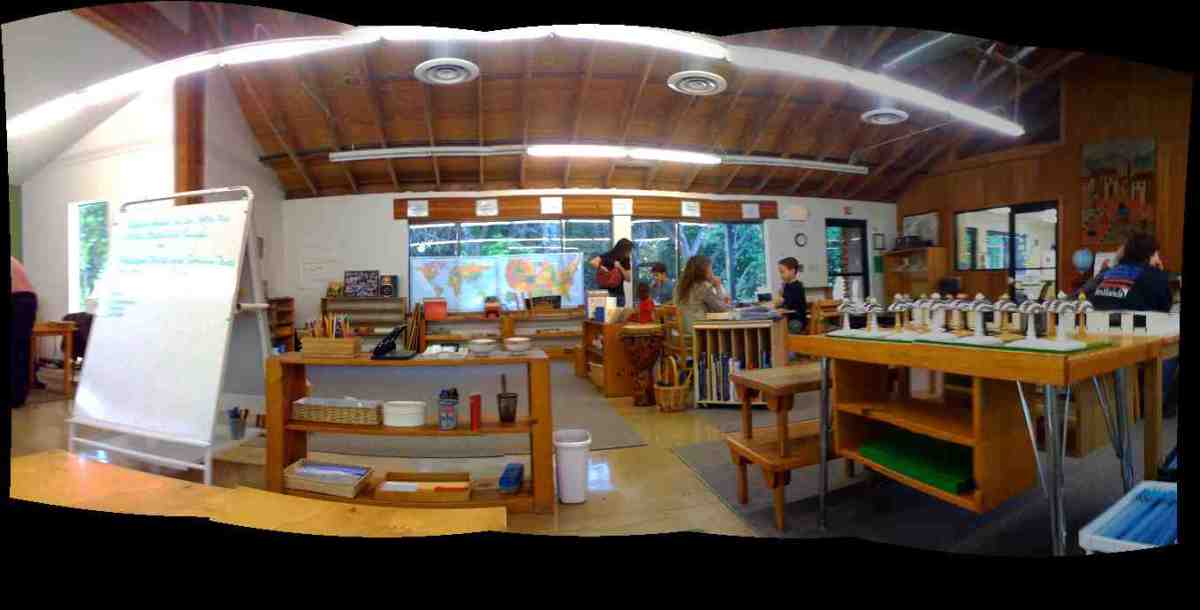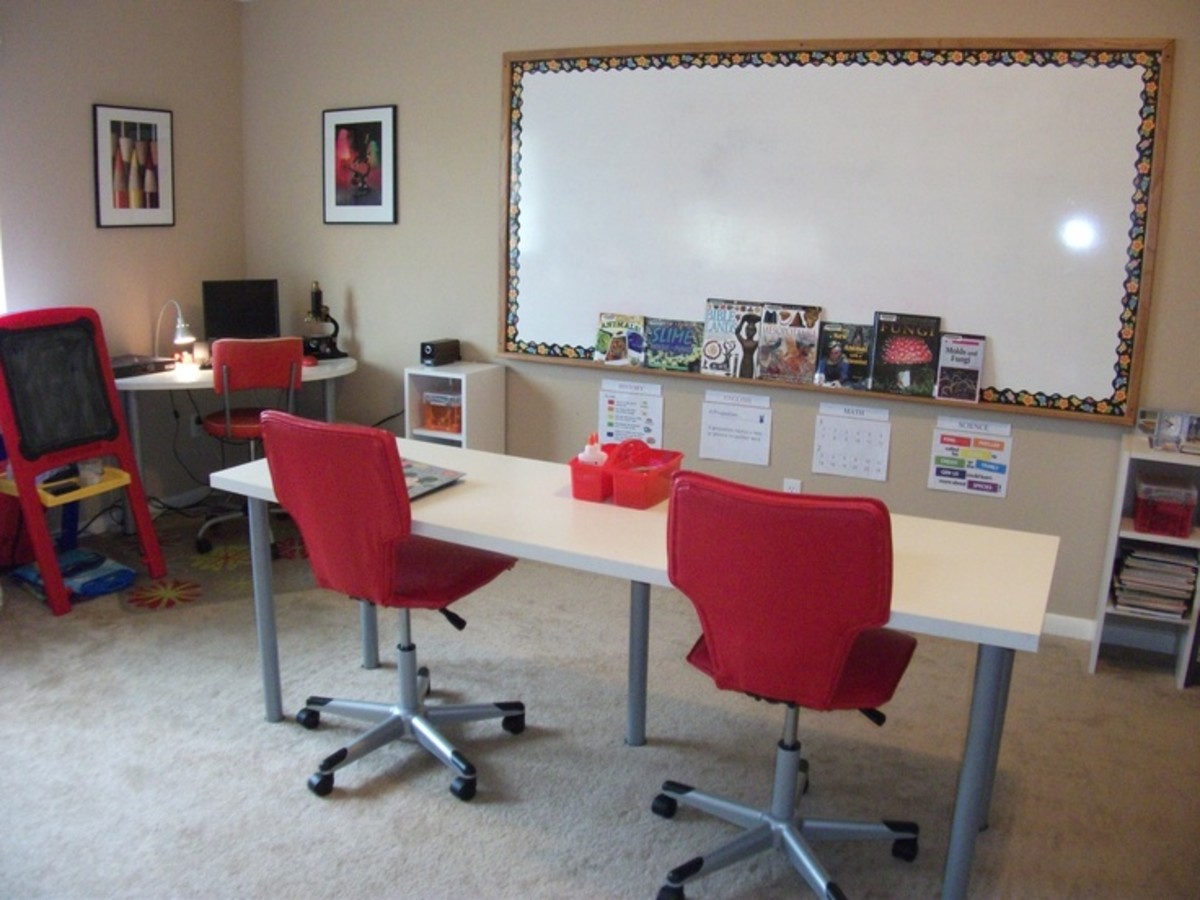Learning Made Fun
Learning Made Fun
Watch any episode of Little House on the Prairie to observe how children learned on the prairie. Kids hiked to a centrally located schoolhouse and sat rigidly in tightly arranged rows while a kindly but fetching schoolmarm scratched on a blackboard. The more advanced schools provided laptop blackboards to each student: some even had built-in chalk attached with a bit of string.
Learning progressed in a rote fashion unless a gunfighter rode into town, at which time all the boys played hooky to hide behind the stable in breathless anticipation of a shoot out. Girls wore clean and tidy paisley smocks that doubled as church clothes. The schoolmarm eventually married the owner of the General Store, who eventually died in the shoot out.
Today, learning occurs in a much different environment. Children sleep until 5:30 AM, then trudge into the kitchen for heaping bowls of Sugar Pops. They watch reruns of 80's sitcoms on TV Land until the bus comes. Once at school, they sit in tightly arranged rows while a union rep lectures them about the benefits of a planned economy and teaches them what will be on the standardized exams.
Can Learning be Made Fun?
Perhaps the words 'learning' and 'fun' should not be placed in the same sentence unless the words 'cannot' and 'be' are inserted between them. How can sitting in rows of desks staring at wall clocks until the next class bell rings possibly be considered remotely related to any definition of the word 'fun?'
Perhaps online alternatives to traditional learning might approach the boundaries of fun. Toss in some animation, a little sound, and a dash of real-time feedback to pump up the fun quotient. We don't teach vector calculus this way, but addition and spelling could be conducive to enjoyment. If we act prudently enough the kids will never suspect they are learning.
What is self-paced learning?
A traditional instructor-led classroom model imposes specific limitations on learning:
- The class must stay together. Regardless of how quickly or slowly the students absorb the material, every student is required to learn at the same pace.
- The class must learn at the pace of the teacher. Every instructor presents material at a different rate with a slightly different style. Evey instructor emphasizes different points. The same material presented by two different teachers may appear radically different.
- The class usually progresses at the pace of the slowest learner. Over time, the student requiring the most attention will dictate the overall rate at which the class progresses.
Self-paced learning generally removes the instructor-led limitations from the classroom. Students have individual access to the curriculum. Instead of waiting for the teacher to move the class forward, the student decides when a task has been mastered.
Many self-paced environments require regular and specific attendance. Not every student has the self-discipline to plop down in front of a computer and slog through curriculum on a consistent basis. Simply knowing that there's a human being taking attendance is often sufficient motivation to begin the learning process.
When is Self-Paced Learning appropriate?
Self-paced learning fits well into curriculum related to technical subjects and task-based subjects. Course material that can be standardized into computer-based modules often can be absorbed by a wide range of students who are given the opportunity to study at their own pace.
For example, computer training is frequently amenable to self-paced learning. Students are given a computer, a set of headphones, and multimedia-based training materials. Each student progresses through the material at his/her own pace. Frequent skills-based assessments are built into the curriculum: no student can progress without demonstrating some level of competency. Assessment results are recorded and centralized: qualified administrators have sufficient information to oversee student progress.
When is Self-Paced Learning not appropriate?
Many topics and subjects benefit greatly from the input and style of a talented teacher. A teacher adds depth of experience. Exceptional teachers can 'read' classrooms to detect exceptional teaching moments. Sometimes a tangent is necessary. Group learning will always have a place in modern education. A good teacher can make a subject fun.
Can a group dynamics course be delivered in a self-paced model? Perhaps not. By definition, teaching the nuances of working and playing in groups virtually requires learners to interact in groups. Chat rooms don't count. A skilled teacher (not a facilitator) becomes necessary.
Some types of learners studiously avoid any type of course requiring public speaking. A common strategy is to 'hide' public speaking assignments within subjects. A course in American History or even Software Engineering can easily be configured to obligate a PowerPoint presentation, a round table discussion, or an impromptu speech from each student. Many self-paced learners readily admit their attraction to sitting quietly in front of a computer screen rather than speaking in front of a group: it takes a teacher to help them overcome this reticence.
Self-Paced learning can be found online
Scrupulous web sites disguise self-paced learning as online games. Children may absorb basic subjects such as arithmetic, spelling, and observational skills by 'playing' 'games' at virtually no cost. Parents can safely plunk their little ones in front of flat screens linked to web sites. There's no teacher: it's all self-paced. Learning disguised as fun sneaks up on the kids.
What makes learning fun?
Generally, kids react well to frequent and positive feedback. A web site that includes sound and animation can disguise a learning experience as a simple online game. An increasing score provides encouragement and also stimulates players/learners to continue improving.
What topics are fun to learn?
- Basic arithmetic: many web sites offer games that teach counting, addition, and multiplication. These concepts can be presented as a series of drills that move from simple to (relatively) complex while providing real-time feedback and scores. Another huge advantage of these online experiences is the way that the problems are presented. Some learners benefit greatly from a graphical representation of mathematical concepts, while others are comfortable with numerals and operators. A well-designed web site can offer parallel presentations, therefore benefiting different learning styles.
- Critical thinking and pattern matching: Computers are wonderful at generating patterns and presenting challenges in the form of games. Sprinkle in a little sound and color to keep learners interested.
- Memorization: some stuff simply must be committed to memory. Critical thinking and logical reasoning still matter, but all learners need some facts and figures. An online matching game provides learning opportunities disguised as fun.
Conclusion
Learning can be fun, and fun learning can be found online.








